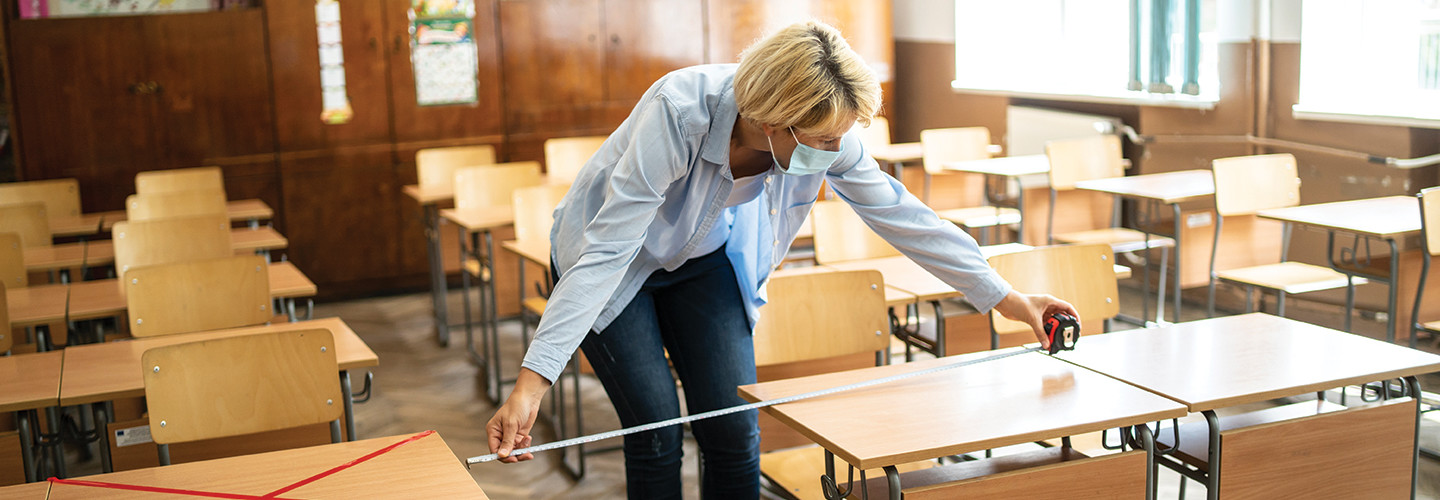Don’t Underestimate the Effectiveness of Digital Signage
It seems simple enough: In spaces where social distancing is needed or mandated, signage can be extremely effective for communicating guidelines, rules and updates. But in a climate where today’s reality can quickly become a lesson in what not to do tomorrow, constantly creating new print signage is neither sustainable nor cost-effective.
Digital signage, on the other hand, can be changed in an instant and can display multiple rotating messages while taking up less space. There are options available for both indoor and outdoor signs, many of which are highly durable, can withstand 24/7 usage and offer high-quality imagery and visibility.
While it might require a bit more of an upfront investment, the long-term costs are significantly smaller, and the benefits — such as flexibility and efficiency — are much greater.
Minimize Risk by Reducing Surface Contact and Touch
While much of the discussion about virus spread has focused on respiratory transmission, contaminated surfaces can also pose a risk. A simple sneeze or even just an overexcited talker can produce droplets that land on a table, desk or screen, ultimately infecting the next person who touches that surface and then inadvertently touches their eyes, nose or mouth.
Fortunately, there are numerous ways to decrease the number of touchpoints in a physical classroom and throughout campus. For starters, make sure that all classrooms and lecture halls have powerful, reliable Wi-Fi so that students never have to share cables. Also, consider hands-free sanitization tools, such as automatic sanitizer dispensers. Research has shown that light switches are touched at least once every two hours and wall thermostats once every 35 hours, which presents a solid case for investing in motion- or voice activated lights and thermostats.
RELATED: Learn more about sanitization drone applications on campus.
Seize Every Opportunity to Safely and Thoroughly Sanitize
Today’s classrooms are increasingly stocked with tools and technologies that are accessible to and used by multiple students over the course of a given day. That means a lot more time and effort put into sanitizing those surfaces in between classes and users. Moreover, the shift to remote learning has resulted in a much more constrained supply chain — schools cannot afford for valuable hardware to be tethered to a classroom or building that might have to be closed following an outbreak.
To ensure a blend of flexibility and thoroughness when it comes to sanitization, many schools are outfitting mobile carts with portable equipment that can be moved from place to place — and sanitized after every use. Schools can also benefit from technologies that enable large-scale sanitization, such as UV drones or wands.
While everyone hopes for a full return to normal, ultimately, we still don’t quite know what to expect for the fall 2021 academic term. What we do know, however, is that we have a wealth of tools at our disposal to offer a safer return to campus for those who find themselves back in a classroom.
This article is part of EdTech: Focus on Higher Education’s UniversITy blog series.











